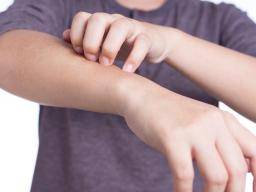



If well-nourished and immunocompetent, these dogs will show few, if any, signs of disease. Although some immunity to infection does develop, mature dogs may harbor small numbers of worms and contaminate the environment.Those that survive may continue as "poor doers" with chronic anemia. Without immediate intervention, these animals may die of the infection. Puppies harboring many worms will develop an acute normocytic, normochromic anemia followed by hypochromic, microcytic anemia due to iron deficiency. Infected pups may present with pale mucus membranes and anemia, ill thrift, failure to gain weight, poor hair coat, dehydration, and dark, tarry diarrhea (melena).caninum is most severe in young pups that are infected through nursing (the transmammary route) shortly after birth. Disease in dogs caused by infection with A. caninum is a voracious bloodsucker and can actually bleed a puppy to death. Small bleeding ulcers form where the worms once fed.Īdult worms may live for 4 to 24 months in the small intestine. Worms may detach and move to new sites and reattach. Immature and adult worms attach to the mucosa of the small intestine, digest the tissue, inject anticoagulants, and suck blood. When a dog ingests these larvae in animal tissues, the larvae travel to the small intestine, where they are released and mature into adult worms. Larvae that infect other animals (paratenic/transport hosts) do not develop further in these hosts but become dormant (hypobiosis/arrested development) in various host tissues.

When infective larvae are ingested, some may penetrate the oral cavity and the gastro-intestinal tract mucosae and migrate as described many of these larvae, however, remain in the alimentary tract and mature to adults in the small intestine. These arrested larvae are activated after removal of adult worms from the intestine activation also occurs during pregnancy, with the larvae accumulating in the mammary glands and secreted in the milk. Arrested development may also occur in the mucosa of the small intestine. caninum will migrate through the lungs and enter somatic tissue, where the larvae become dormant, or arrested. In dogs more than 3 months of age, some A. Transmammary transmission of larvae from the bitch to pups is an important route of infection for A. Dogs may also become infected by eating cockroaches that contain infective larvae. This development occurs in approximately 2 to 9 days, depending on temperature and humidity.ĭogs become infected with hookworms via ingestion of the third-stage larvae from a contaminated environment, larval penetration of the skin, and/or ingestion of other vertebrate hosts with infective larvae in their tissues. Adult hookworms live in the small intestine and shed eggs in feces and into the environment, where they larvate, hatch, and develop into infective third-stage larvae.


 0 kommentar(er)
0 kommentar(er)
